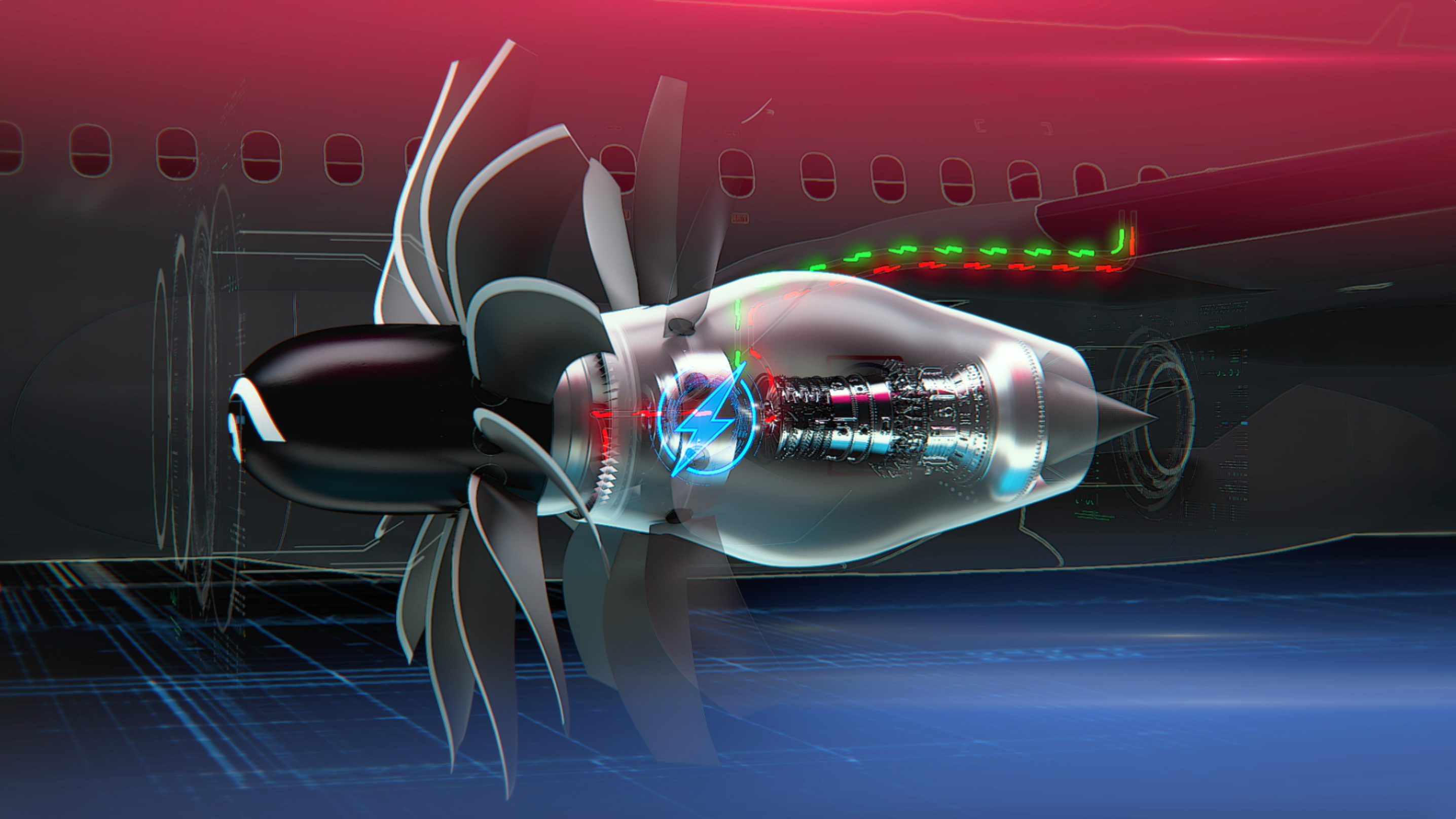Hybrid-Electric Technology: The Future of Aviation
Hybrid-electric cars have long been a familiar sight on our roads, blending the benefits of electric power and traditional gasoline engines. This innovative approach is now poised to revolutionize the skies with the development of hybrid-electric jet engines. NASA, in collaboration with GE Aerospace, is at the forefront of this technological leap, aiming to design and build jet engines that consume significantly less fuel with the aid of new electrical components.
In these advanced engines, a fuel-burning core remains the primary power source but is supplemented by electric motors. These motors generate electrical power that is reintegrated into the engine, effectively reducing the amount of fuel required for operation. This hybrid approach promises to enhance fuel efficiency and reduce carbon emissions, marking a significant step forward in sustainable aviation technology.

Anthony Nerone
NASA Project Manager
The HyTEC Project
The development of this hybrid-electric jet engine is part of NASA’s Hybrid Thermally Efficient Core (HyTEC) project. The ambitious goal is to demonstrate this engine concept by the end of 2028, paving the way for its integration into commercial airliners by the 2030s. This initiative represents a major milestone in aviation technology, introducing the first-ever mild hybrid-electric jet engine. A "mild hybrid" system utilizes electrical machines that function both as motors and generators to partially power the engine.
Anthony Nerone, Project Manager at NASA’s Glenn Research Center in Cleveland, emphasizes the significance of this innovation: “This will be the first mild hybrid-electric engine and could lead to the first production engine for narrow-body airliners that’s hybrid electric. It really opens the door for more sustainable aviation even beyond the 2030s.”
Smaller Core, Greater Efficiency
The envisioned hybrid-electric technology could also be powered by a new, smaller jet engine core. One of the primary objectives of the HyTEC project is to design and demonstrate a jet engine with a reduced core size that still produces comparable thrust to current engines used in single-aisle aircraft. This smaller core is expected to reduce fuel burn and emissions by an estimated 5 to 10%.
A GE Aerospace Passport engine is currently being modified to incorporate hybrid-electric components for testing purposes. According to Nerone, today’s jet engines are not truly hybrid-electric; they utilize generators for powering auxiliary systems like lights, radios, and in-flight entertainment, but not for engine propulsion. The challenge lies in determining the optimal phases of flight to deploy the electric motors for maximum fuel savings.
Testing and Future Implications
Later this year, NASA and GE Aerospace will conduct tests to identify the flight phases where hybrid-electric technology can yield the most significant fuel savings. The integration of embedded electric motor-generators aims to optimize engine performance by creating a system that can operate with or without energy storage solutions like batteries. This approach could hasten the adoption of hybrid-electric technologies in commercial aviation, even before energy storage advancements are fully realized.
Arjan Hegeman, General Manager of Future Flight Technologies at GE Aerospace, underscores the importance of this collaboration: “Together with NASA, GE Aerospace is doing critical research and development that could help make hybrid-electric commercial flight possible.”
Broader Impact and Sustainability Goals
The HyTEC project is part of a broader effort by GE Aerospace under CFM International’s Revolutionary Innovation for Sustainable Engines (RISE) program. CFM, a joint venture between GE Aerospace and Safran Aircraft Engines, launched the RISE program in 2021 to advance technologies such as hybrid-electric systems and advanced engine architectures. These innovations aim to be compatible with 100% Sustainable Aviation Fuel (SAF).
HyTEC is a key component of NASA’s Advanced Air Vehicles Program (AAVP) and the Sustainable Flight National Partnership (SFNP). This partnership includes collaborations with government, industry, and academic entities, all working towards the U.S. goal of achieving net-zero greenhouse gas emissions in aviation by 2050.
Conclusion
The development of hybrid-electric jet engines marks a transformative moment in the aviation industry. By reducing fuel consumption and emissions, this technology promises to make air travel more sustainable and environmentally friendly. As NASA and GE Aerospace continue their pioneering work, the dream of hybrid-electric commercial flights is becoming an increasingly tangible reality.
For more detailed information on the HyTEC project and its progress, you can visit NASA’s official page here.
Good to Know
Understanding the significance of this development, it is essential to recognize the broader context of sustainable aviation. The aviation industry is a significant contributor to global greenhouse gas emissions. Innovations like hybrid-electric engines are crucial in the quest to reduce the environmental impact of air travel. Sustainable Aviation Fuel (SAF), which can be derived from renewable resources, is another critical component in this effort. When used in conjunction with advanced engine technologies, SAF can further reduce emissions, making air travel greener and more sustainable.
Industry Reactions
The aviation industry has shown a keen interest in hybrid-electric technologies. Many experts believe that these innovations will play a pivotal role in achieving sustainability goals. Airlines are increasingly investing in research and development to integrate these technologies into their fleets. The collaboration between NASA and GE Aerospace is a testament to the industry’s commitment to greener skies.
References
For more insights and updates on the development of hybrid-electric jet engines, you can refer to NASA’s official website and follow their ongoing projects in sustainable aviation. The journey towards a more sustainable future in aviation is well underway, and hybrid-electric technology is leading the charge.
For more Information, Refer to this article.

































